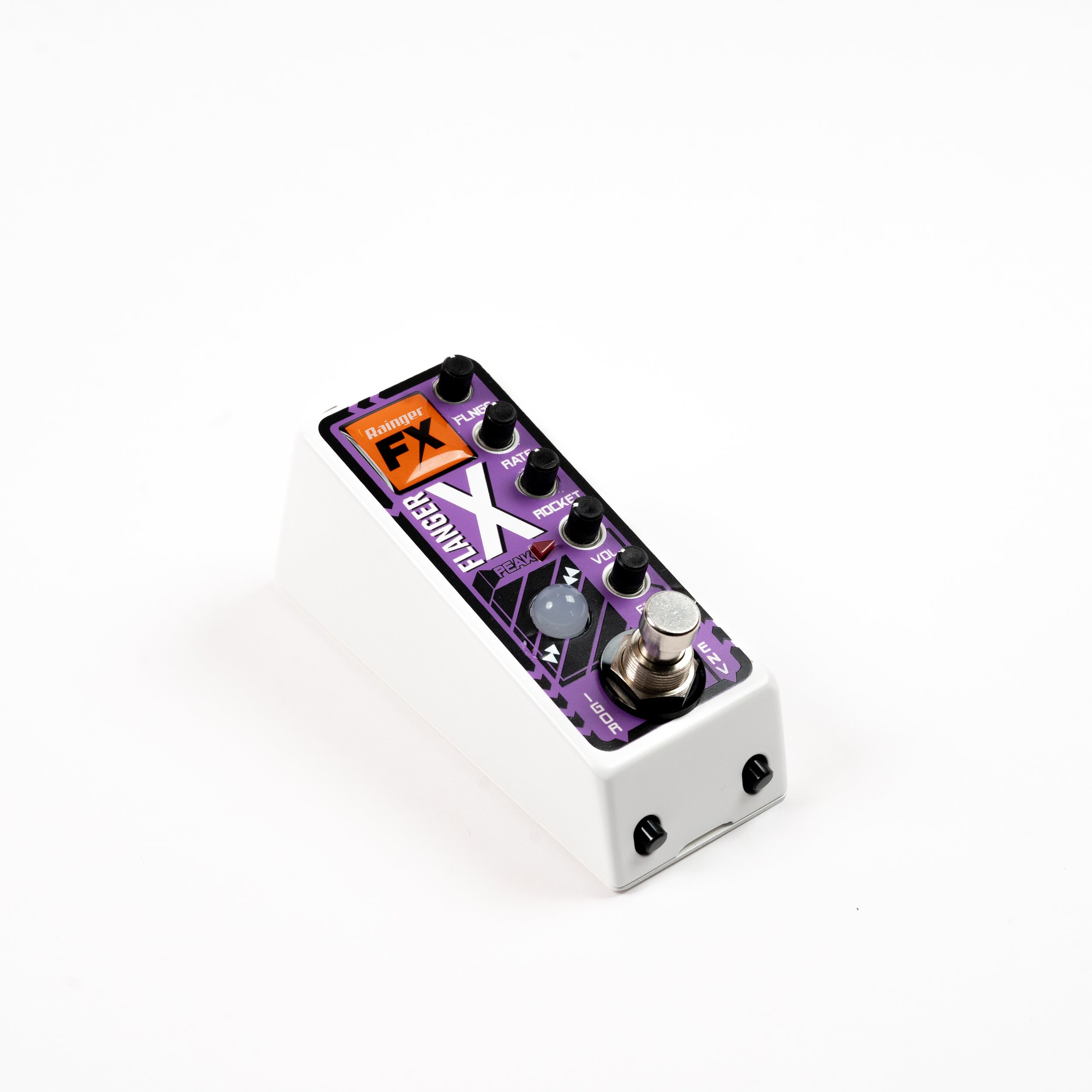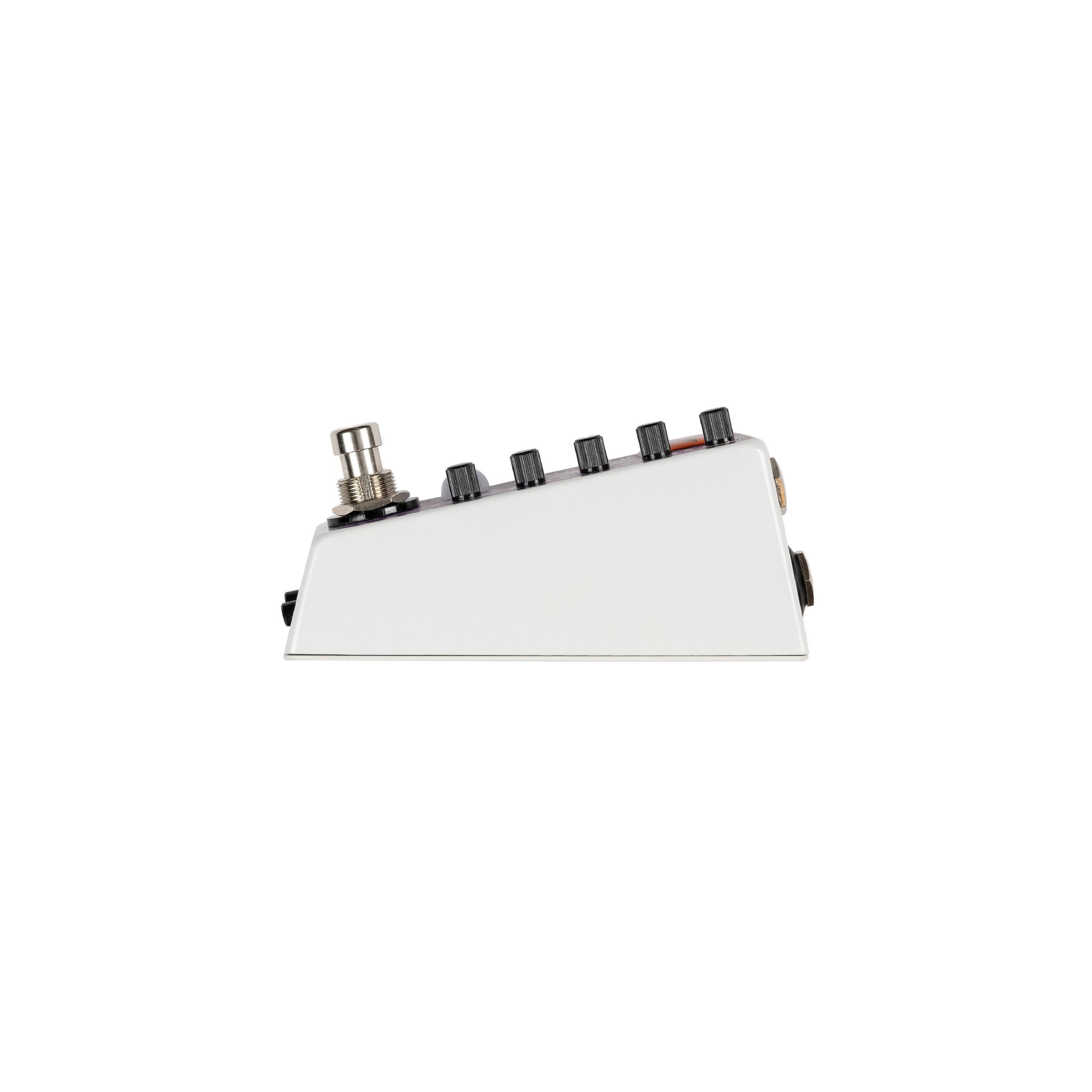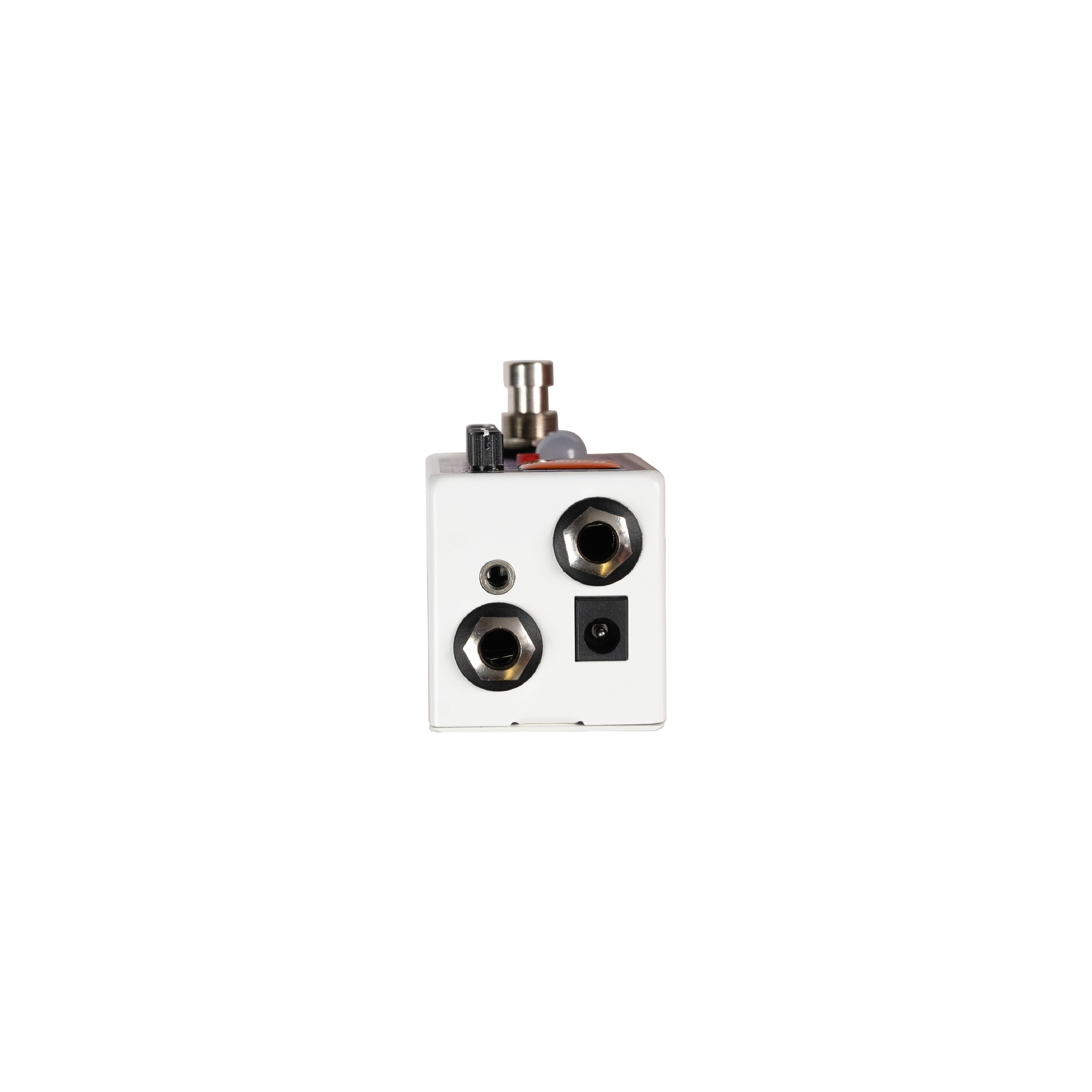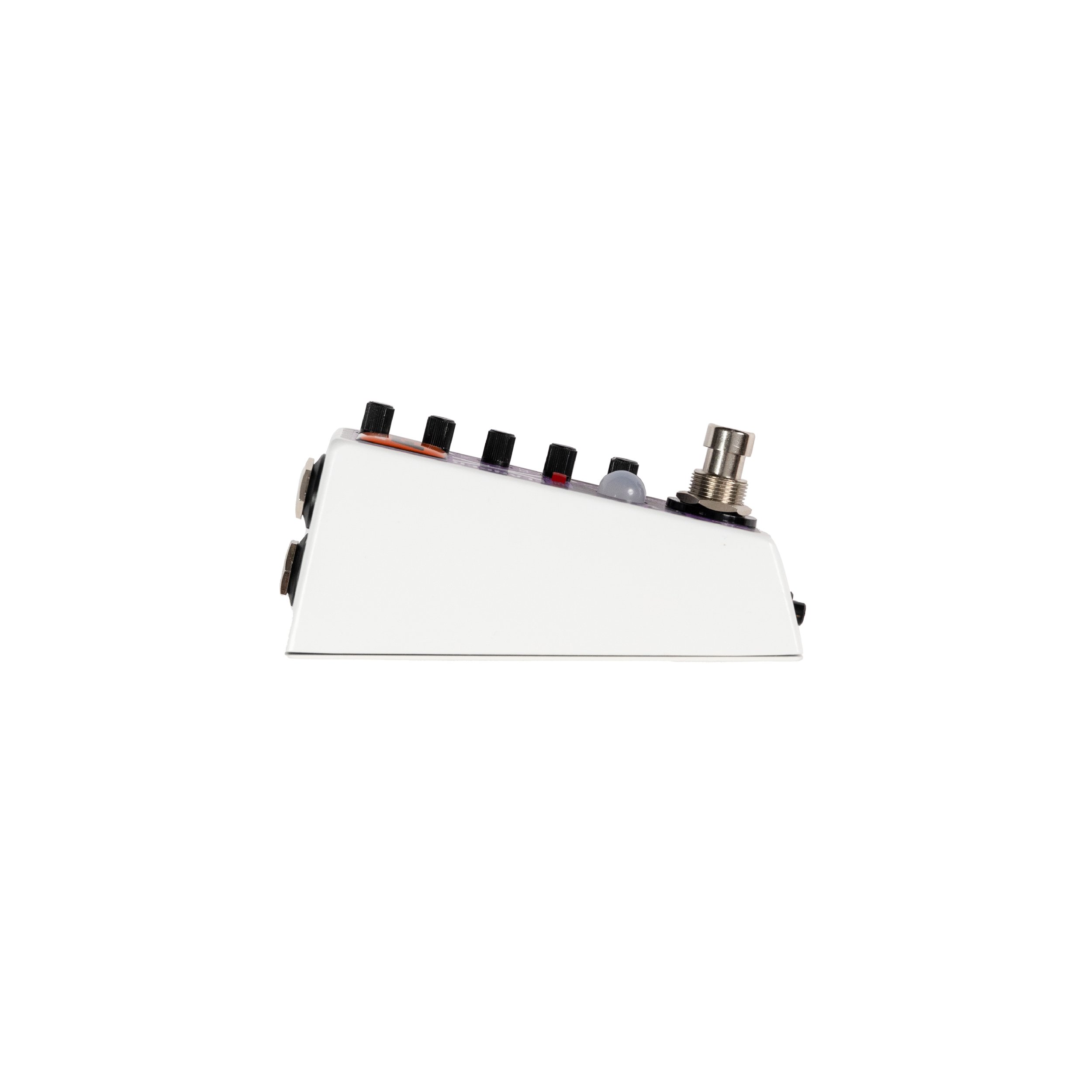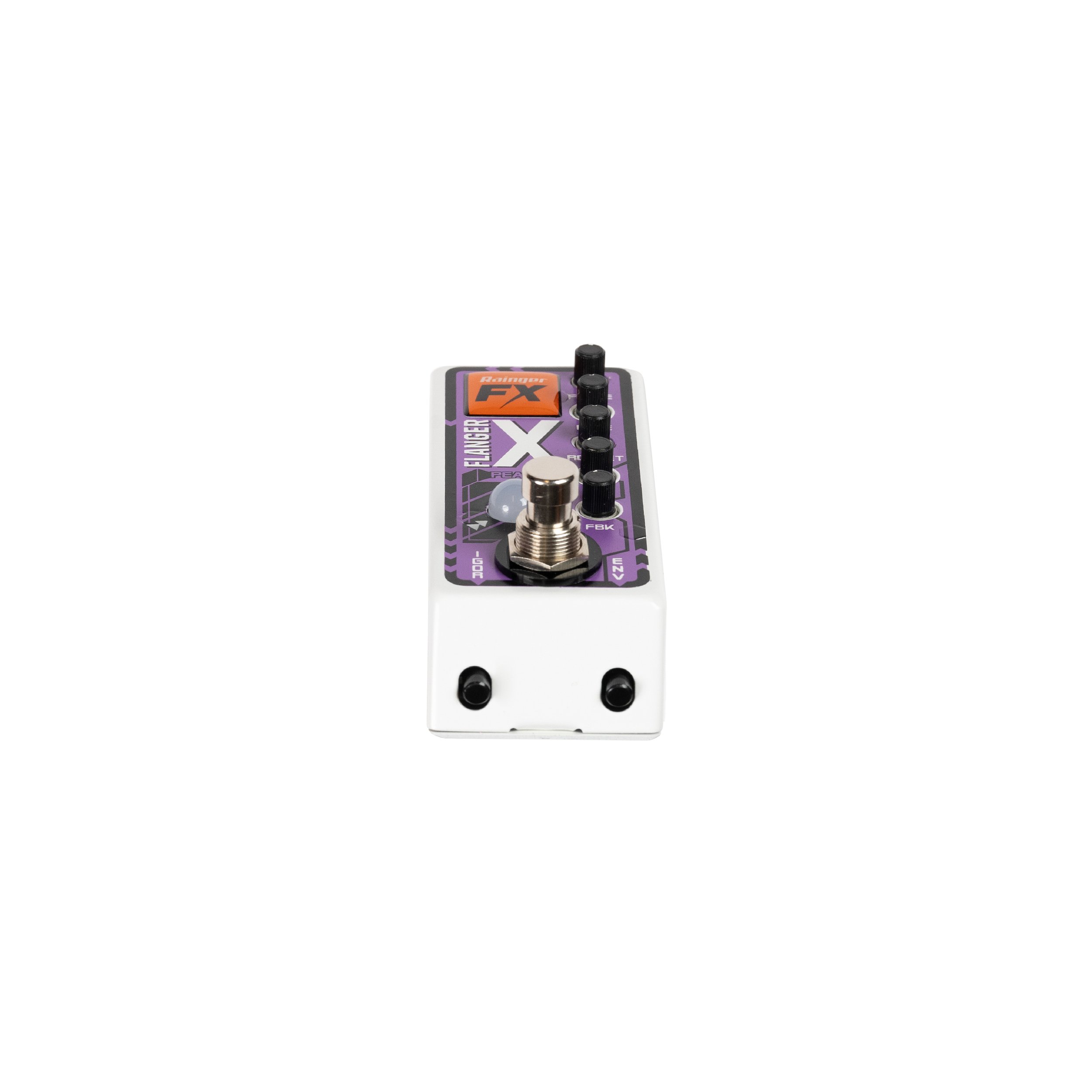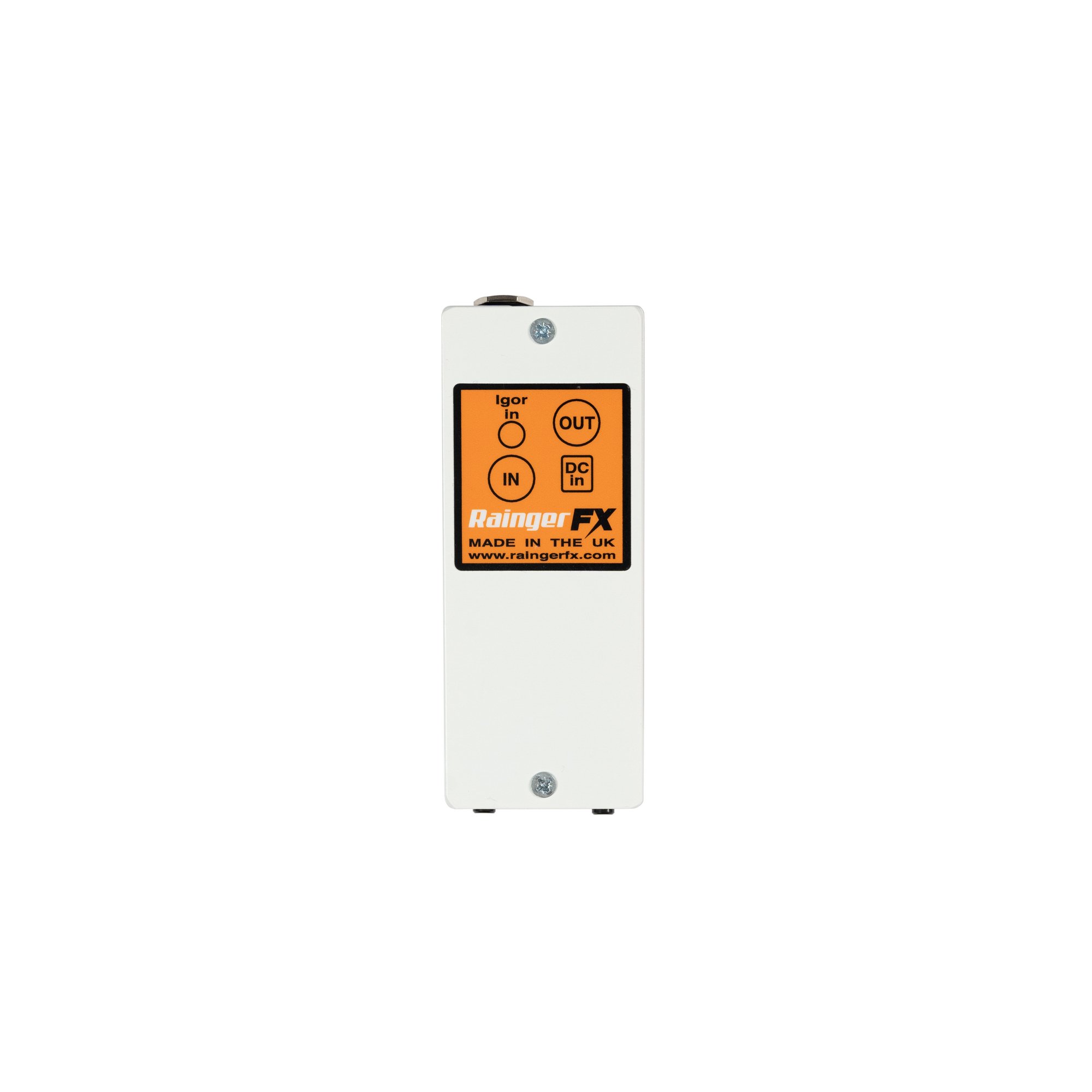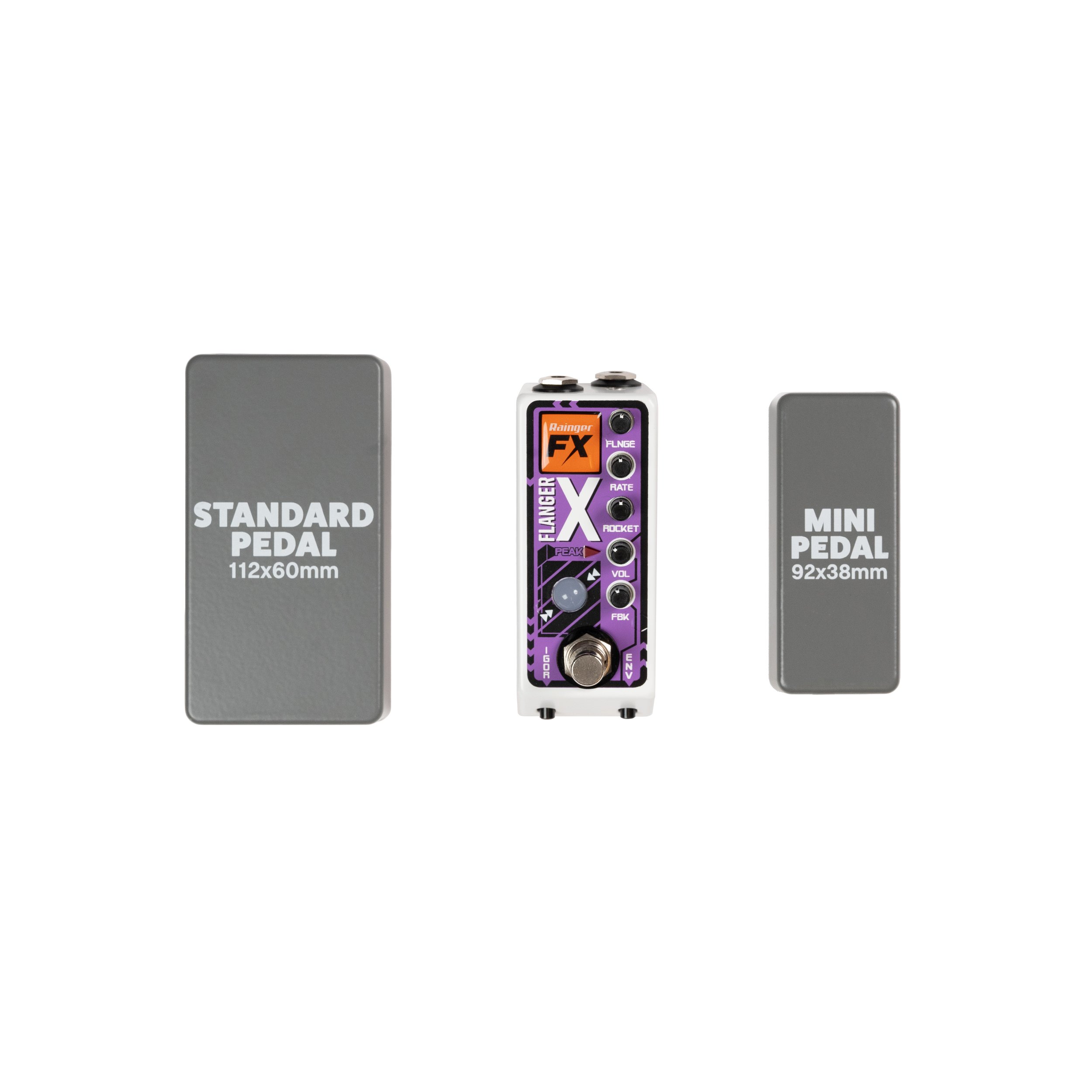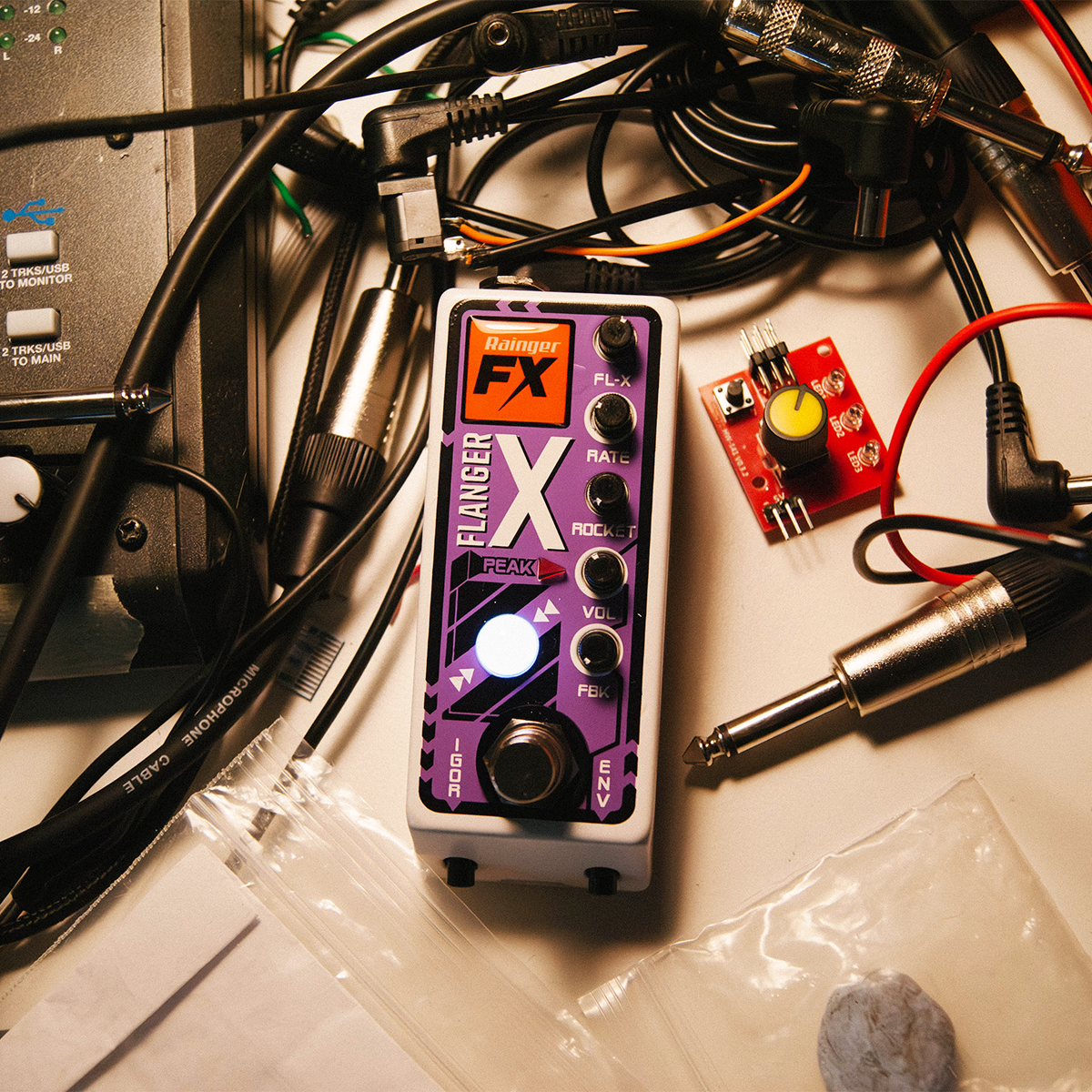-
The Flanger-X is a digital flanger, the latest in our ‘X’ series of mini-pedals. It does anything from a slight chorus through to a massive modulation, from ‘stationary’ flange tones to ultra-fast wobbles. And it also has a built-in huge rocket launch sound reproduction - to mix in to exaggerate the flanger into a colossal sweep - at some settings overwhelming the actual instrument sound itself!
The Flanger-X is the flangiest flanger that ever flanged!!!
It’s true-bypass, and digital - and features an analogue sound reproduction of a space rocket launch, as it burns through the atmosphere heading to space! This sound is envelope-controlled, or on all the time, or just in specific bursts whenever you press Igor. Add in the amount needed - maybe have it completely silent, or up full to really blast away the cobwebs…
Controls
The main controls are ‘Flange’ - for amount of the effect, ‘Rate’ - from stationary to weirdly fast, ‘Rocket’ - from nothing to full blast, ‘Vol’, and ‘FBK’ - for those twangy fast-repeat echo trails….
There’s an ‘Igor’ switch, changing it from speed ramp-up to momentary noise burst. The ‘Env’ switch changes the rocket sound from envelope-controlled to always-on.
There’s a ‘Peak’ LED - to show that the digital input is overloading; this does no damage at all, but happens when ‘rocket’ is on full - adding the final distorted intensity to the sound.
About the rocket noise
This is a full-frequency, three-dimensional analogue rocket sound simulation, with the muffled pops and low roar of a heavy-lift vehicle launching. The sound is partly achieved - at full ‘rocket’ setting - by overloading the input to the digital flanger circuit, adding an extra layer of bubbling distortion.
Turn down this knob and the rocket seems to move away (through a cloud layer….?!)
On the ‘ENV’ setting however, the rocket sound follows the envelope of the signal, and has most of its low-end rolled off - just adding texture and keeping it out of the way of the main tone of the notes you’re playing.
Play the Flanger-X into some sort of drive pedal after it, and it adds a really exciting fizz, with dramatic silence in the quiet bits.
About Igor
Igor is a pressure-sensitive controller, designed to get real-time expression easily. At one setting, lean on it and it speeds up the modulation to its fastest rate. At the other setting, it adds a rocket noise burst… like interference breaking through…
It’s dual sensitivity; flip it over for a hard or soft press.
The Flanger-X is a unique flanger; designed to create the real extremes of modulation settings - and everything in between.
The innovative rocket sound adds amazing textural effects and can sound fascinatingly hypnotic, but at the same type incredibly powerful.
-
What is the current drawer of the Flanger-X?
65mA
Can I turn the rocket noise off?
Yes! You can have none at all if you want, or just a tiny bit.
Why is the ‘Peak’ LED flickering?
It’s responding to the input to that chip; the noise signal has occasional moments when it’s slightly quieter.
Sometimes the instrument signal makes the ‘Peak’ LED come on! What is that?
Both the rocket noise and the instrument signal are combined in the flanger chip; if one of them is loud, it will trigger the ‘Peak’ LED
Does the rocket noise damage the digital flanger circuit, overloading it like it does?
Not at all - it’s just using it in a way not originally intended. We tried taming it to not overload that section, but it lost its excitement.
What does the ‘Flange’ control do exactly?
It does two things at once; controls the width of the modulation, and the amount of the pitch-changed signal mixed in.
So is this a ‘jet flanger’ circuit?
No - the ‘jet flanger’ I believe is a name conjured up to describe the feeling of a flanger, and doesn’t have noise added in. This one has noise actively filtered in, and it’s a noise we’ve worked hard on to simulate a rocket lifting off….
On some settings why does it sound like a delay with a very quick repeat setting?
That’s how flangers work - it’s a very short delay, with the delay time modulating faster and slower
Why does the rocket noise seem to make the flanger effect more prominent?
It’s to do with adding more trebly information to the signal


